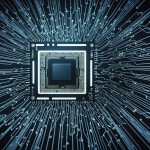Integrating Advanced Technologies into Daily Computing
Emerging technologies such as artificial intelligence (AI), the Internet of Things (IoT), and edge computing are reshaping everyday computing. These innovations drive the ongoing digital transformation that impacts both personal and professional spheres.
In personal computing, AI enhances user experiences through intelligent assistants, predictive text, and personalized recommendations. Smart devices connected via IoT allow seamless control of home environments—adjusting lighting, temperature, and security—all through a single interface. This interconnectedness exemplifies how emerging technologies simplify routine tasks.
Have you seen this : What role does the UK play in the development of open-source computing platforms?
Professionally, edge computing reduces latency by processing data closer to the source. This is critical in applications requiring real-time decision-making, like autonomous systems or health monitoring. The integration of AI algorithms with edge devices enables faster, more accurate insights without relying solely on cloud infrastructure.
Practical adoption of these technologies involves understanding how they serve daily needs efficiently. For example, combining IoT sensors with AI analytics can optimize energy use at home or streamline supply chain management in business. As digital transformation accelerates, staying informed about these innovations is essential to harness their full potential in everyday computing.
Also to read : How does the UK compare globally in high-tech computing research?
Practical Applications of High-Tech Solutions in Everyday Life
High-tech solutions like AI in daily life and IoT applications are transforming routine activities into seamless experiences. For example, AI-enhanced productivity software helps users efficiently manage tasks by learning their habits and prioritizing schedules automatically. This reduces time spent on organizing work and boosts overall productivity.
Smart devices play a key role in automating homes. Voice assistants allow hands-free control over lighting, temperature, and security systems, offering convenience and enhanced safety. Additionally, IoT applications connect various devices to create integrated environments where information flows smoothly and decisions are made rapidly.
Everyday navigation benefits from real-time traffic updates powered by advanced computing improvements, helping users choose optimal routes and avoid delays. Entertainment is also smarter—devices learn user preferences to recommend content, improving engagement without needing manual searches.
These examples highlight how AI in daily life and smart devices streamline scheduling, navigation, entertainment, and security, making modern technology an indispensable part of daily routines. By embracing these innovations, individuals enjoy increased comfort and efficiency with minimal effort.
Enhancing Speed, Security, and Convenience
Speed is a cornerstone of modern computing, made possible by computing speed improvements in hardware and software alike. High-performance processors and optimized algorithms accelerate routine processes, enabling tasks that once took minutes to finish in mere seconds. This boost not only saves time but also enhances productivity across various applications.
In parallel, cybersecurity advances are vital to protect sensitive data amid growing digital threats. Cutting-edge encryption methods, multi-factor authentication, and AI-powered threat detection strengthen privacy and guard against unauthorized access. This robust security framework ensures users feel safe while leveraging powerful technology.
User convenience also receives significant attention, blending simplicity with sophistication. Through thoughtfully designed interfaces and personalised recommendations, users can navigate complex operations effortlessly. These improvements tailor experiences based on individual preferences, reducing friction and increasing satisfaction.
Combining high-tech benefits in speed, security, and convenience creates an ecosystem where technology works seamlessly for users. Whether accelerating workflows, safeguarding information, or simplifying interaction, these elements are fundamental in meeting today’s dynamic digital demands.
Emerging Trends Shaping the Future of Computing
Exploring future computing trends reveals that quantum computing is poised to revolutionize problem-solving. Quantum computers leverage qubits, enabling them to process complex calculations exponentially faster than classical systems. This can transform fields like cryptography, drug discovery, and optimization problems, offering unprecedented computational power. While still in development, these advancements promise to break barriers traditional computers face today.
Another technology advancement gaining momentum is edge computing. Unlike centralized cloud systems, edge computing decentralizes data processing closer to the source, reducing latency and increasing responsiveness. This trend supports the rise of Internet of Things (IoT) devices and real-time applications, from autonomous vehicles to smart cities, by ensuring faster decision-making and reducing dependency on distant servers.
These shifts collectively indicate a move toward more responsive and efficient computing models. As quantum and edge computing evolve, they will provide solutions tailored to specific needs, balancing speed and precision. Keeping an eye on these future computing trends helps businesses and individuals prepare for the transformative impact this technology will have on everyday life and industry innovation.
The Tangible Impact of High-Tech Solutions: Case Examples
Real-world examples highlight the profound user impact that technology adoption can achieve. Consider a small business that integrated cloud computing solutions to streamline operations. This shift not only reduced overhead costs but also enhanced data accessibility, allowing employees to collaborate seamlessly from various locations. The result? Increased productivity paired with greater flexibility.
In another scenario, individuals adopting wearable health tech experienced a direct improvement in their lifestyle choices. Continuous health monitoring provided real-time data, enabling timely interventions and personalized fitness plans. This kind of technological integration transformed user experiences from reactive to proactive management.
Visualising such transformations through infographics can simplify complex information. These graphic representations often illustrate before-and-after snapshots, enabling clearer understanding of benefits. Scenario-based illustrations further enrich insight by contextualizing abstract data into relatable situations—for example, demonstrating how a retail enterprise boosted sales employing AI-driven customer behavior analytics.
Together, these case examples prove how embracing innovative technology produces concrete benefits. They empower users by enhancing efficiency, personalisation, and decision-making, thereby reinforcing why smart technology adoption is indispensable in today’s landscape.
What to Expect: Predictions for the Next Generation of Computing Solutions
The wave of technology predictions for the near future suggests transformative future innovations that will reshape how both consumers and businesses operate daily. Advancements in artificial intelligence and quantum computing promise faster processing speeds and smarter decision-making tools, directly impacting productivity and convenience.
One key prediction is the rise of ubiquitous computing, where devices seamlessly integrate into everyday environments, enhancing user experiences without complex interfaces. Picture homes where smart systems anticipate needs, or workplaces where automation handles routine tasks, freeing human creativity.
Adapting to this pace of change requires openness to learning and flexibility. Embracing new tools early can amplify benefits, while organizations should prioritize upskilling employees to leverage emerging technology effectively. Keeping abreast of trends ensures readiness for shifts that may otherwise disrupt operations.
In summary, the impact on daily life will be both profound and practical, improving efficiency in tasks, enabling personalized services, and fostering innovation. Those who actively engage with these evolving technologies will find themselves well-positioned to thrive as the landscape evolves.



